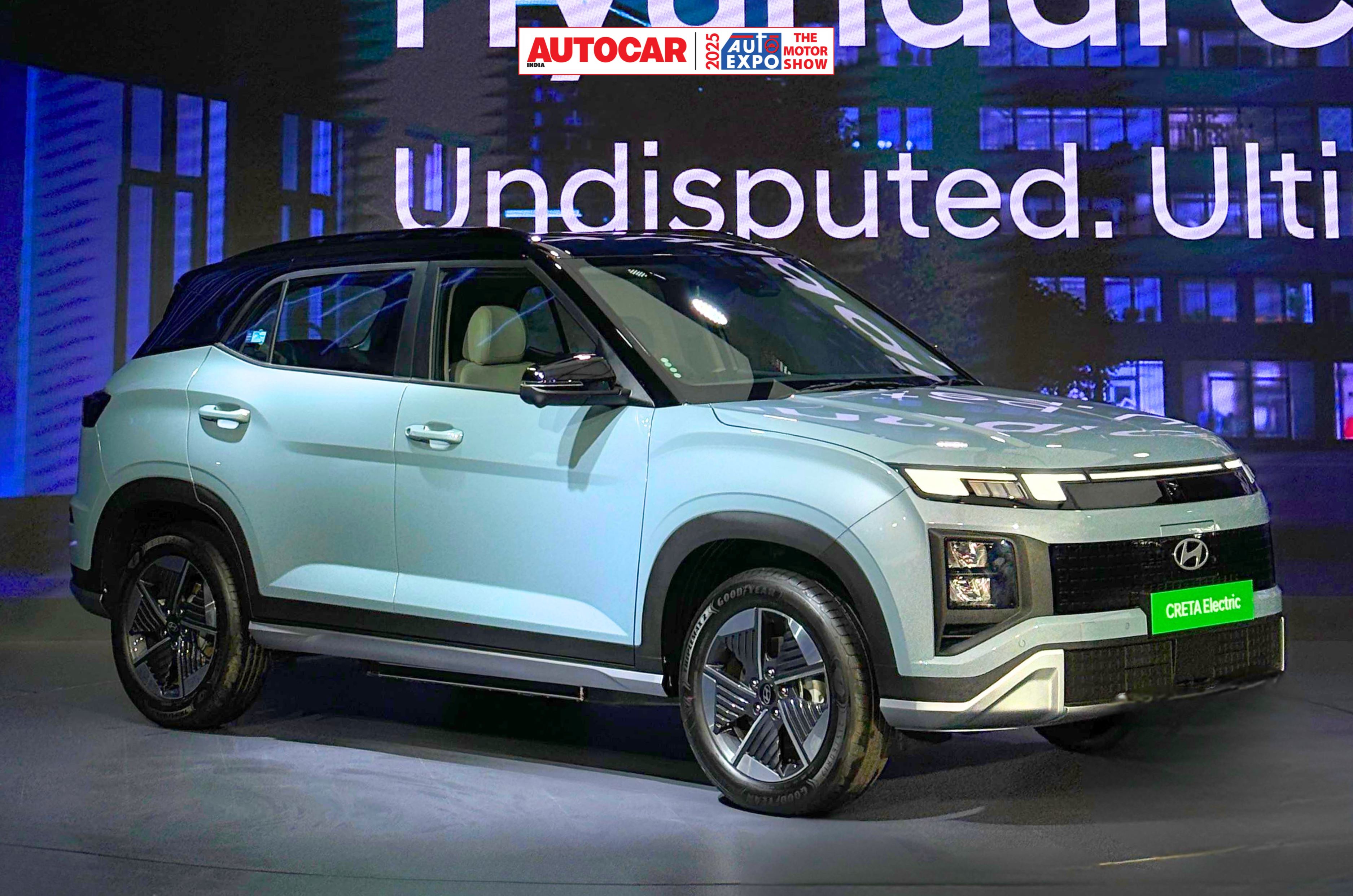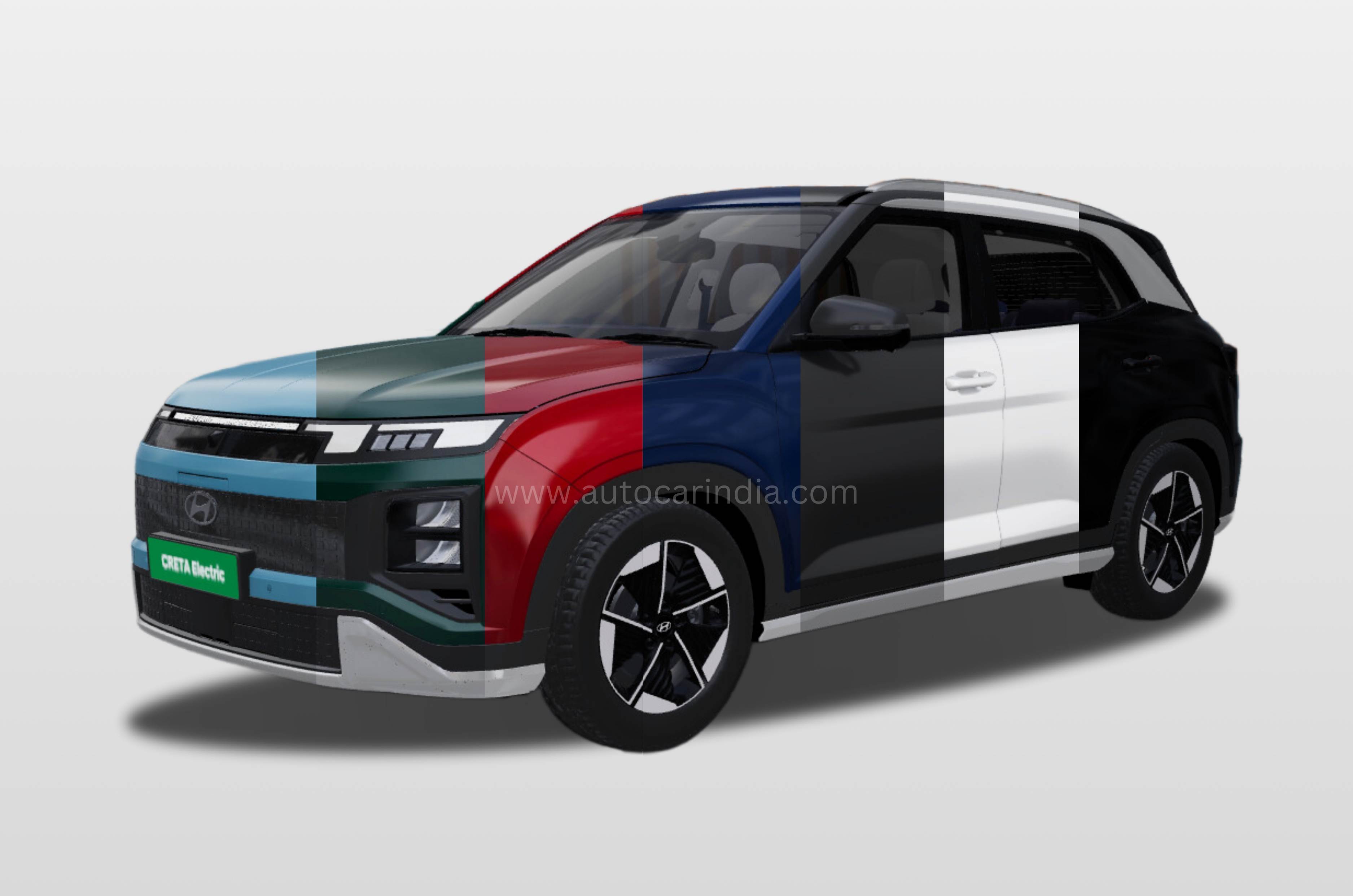
The Hyundai Creta Electric, the carmaker's first mass-market EV for India, has been launched today, with introductory prices starting from Rs 17.99 lakh (ex-showroom). Interested buyers can witness the electric SUV at the ongoing Bharat Mobility Global Expo in Delhi.
- Hyundai Creta Electric is based on the standard ICE model
- LR variant takes 58 mins to charge from 10 to 80 percent with DC charger
Hyundai had opened pre-bookings nearly two weeks back for a token amount of Rs 25,000, and it is available in five variants: Executive, Smart, Smart (O), Premium and Excellence.
Hyundai Creta Electric battery packs, range, charging
Hyundai offers the EV with two battery capacities: 42kWh and 51.4kWh. The smaller cell pack has an ARAI claimed range of 390km, while the Long Range (LR) offers a 473km range. The Creta EV LR has a claimed 0-100kph acceleration time of 7.9 seconds. For reference, the Hyundai Creta N Line takes 8.9 seconds for the same. Powering the Creta Electric is a single motor on the front axle that drives the front wheels. In the Long-Range variant, this motor produces 171hp and 255Nm. The smaller battery gets a 135hp electric motor.
The larger battery takes 58 minutes to charge from 10 to 80 percent with a DC fast charger and 4 hours to juice it from 10 to 100 percent using a 11kW AC home charger. The aforementioned charging speeds were calculated by considering the ambient temperature, supply flow and charger specification, claims Hyundai.
Hyundai Creta Electric exterior, colours

Being based on the Creta ICE, the overall silhouette is identical and only a few bits appear different. Hyundai has given the Creta EV a pixel-like details on the front bumper which is in line with the Ioniq models. A closer look reveals aerodynamic elements like a sealed-off grille and air dam. Notably, the air flaps in the bumper open and close for cooling and airflow, a segment-first feature. We have seen this in the Hyundai Ioniq 5, and it's called the Air Flap technology. The placement of the front camera above the ‘H’ logo is also different, hiding the charging port behind it. The port gets a multi-colour surround light and state of charge (SOC) indicator when the car's plugged in.
In profile, only EV-specific aero alloy wheels with low rolling resistance tyres and blacked-out C-pillars (in dual-tone models) are unique. Changes at the rear include a new bumper with pixel-like detailing mimicing the front, and it also gets a prominent faux skid plate. Instead of the variant’s name, there's an ‘electric’ badge on the tailgate.

In comparison to the standard Creta’s seven colors, the EV gets 10 paint options. There are three matte shades, while Ocean Blue metallic paint with the Black Roof is new. Others include Starry Night, Fiery Red and Atlas White with Black Roof.
Hyundai Creta Electric interior features, safety
Like the exterior, the Creta EV’s cabin has a stark resemblance to the regular Creta. It is equipped with features like twin 10.25-inch screens – one each for infotainment and instrumentation – an 8-speaker Bose audio system, dual-zone AC and auto-dimming IRVM. The central touchscreen also supports voice commands and Bluelink in-car connectivity. Notably, Hyundai has also used sustainable materials for the seat upholstery.

The ‘H’ on the steering wheel is embossed in Morse code, there's a shift-by-wire stalk (on the right, behind the steering), and you get a rotary dial for toggling through the drive modes – Eco, Normal and Sport. Other features include single-pedal driving (i-Pedal), vehicle-to-load (V2L) charging, a dedicated plug below the rear bench and in-car payment that can be used at charging stations. The centre console gets cup holders, buttons for the electronic parking brake (EPB) and auto-hold, and drive modes.
The Creta Electric’s safety equipment includes a Level 2 ADAS suite, six airbags, 360-degree cameras, a tyre pressure monitoring system (TPMS), front parking sensors, rain-sensing wipers and hill-start and descent assist. Read our review of the Creta Electric here.
Also, see:
Hyundai Creta Electric image gallery
Hyundai Creta Electric to be followed by 3 made-in-India EVs